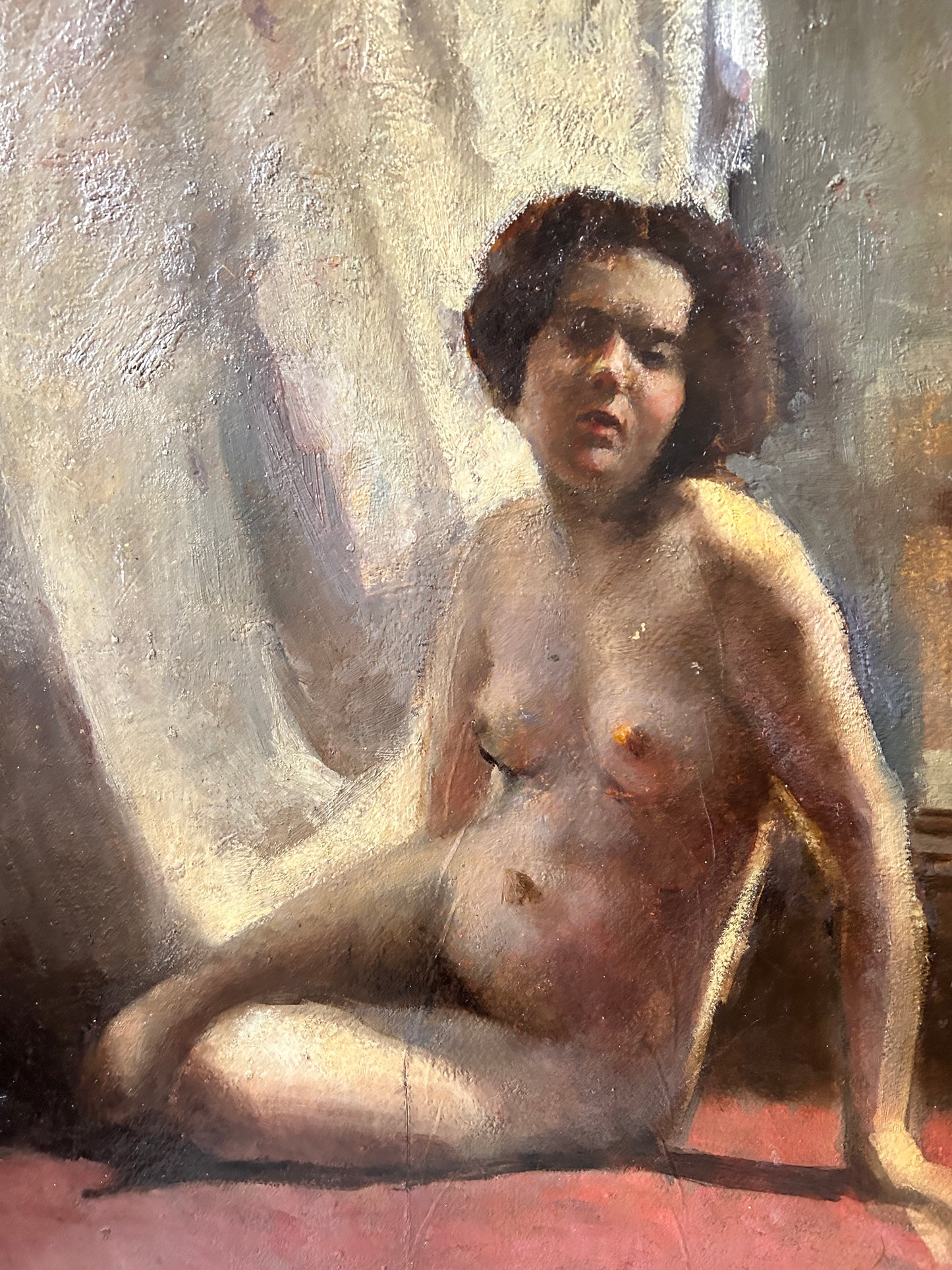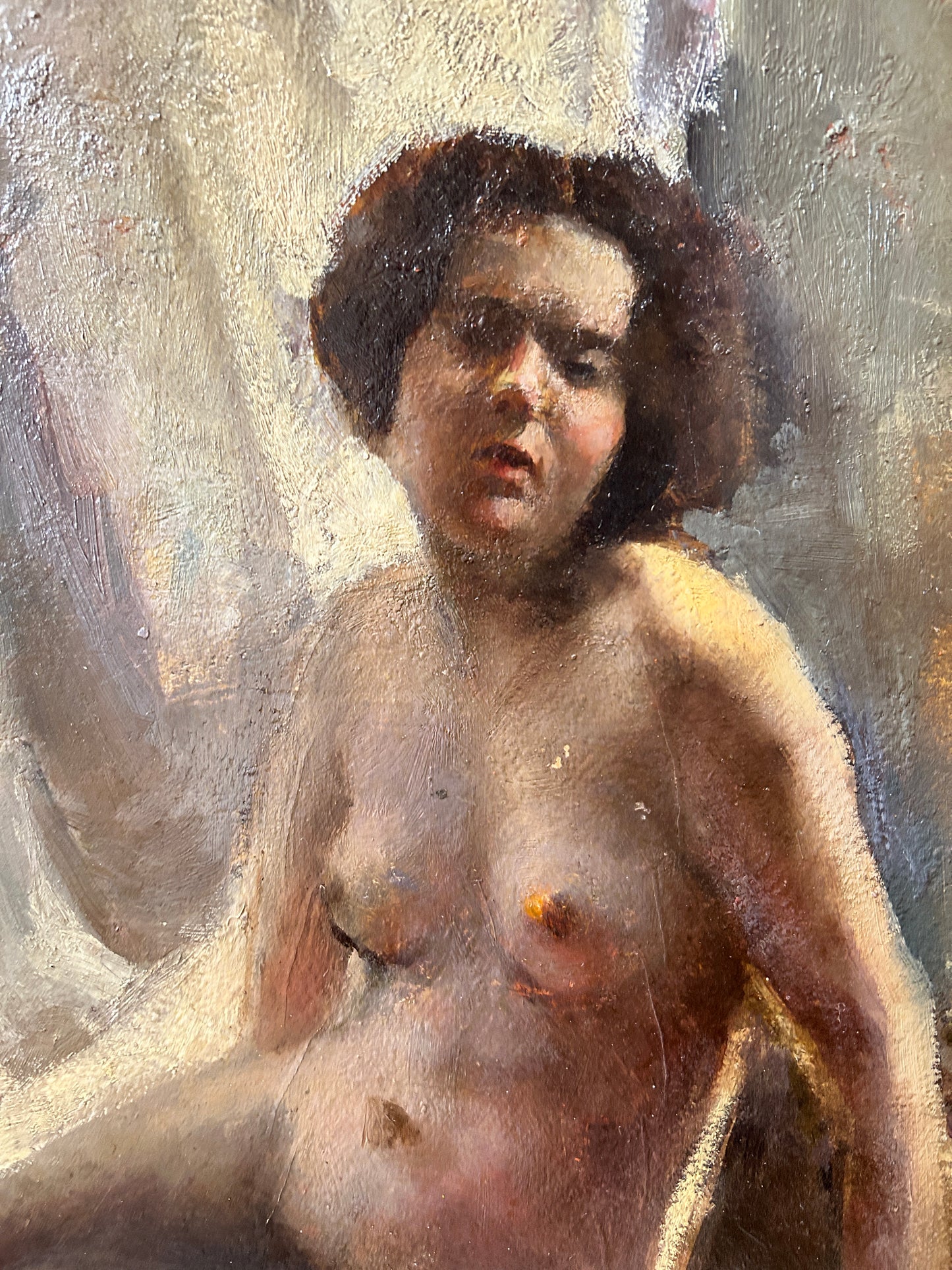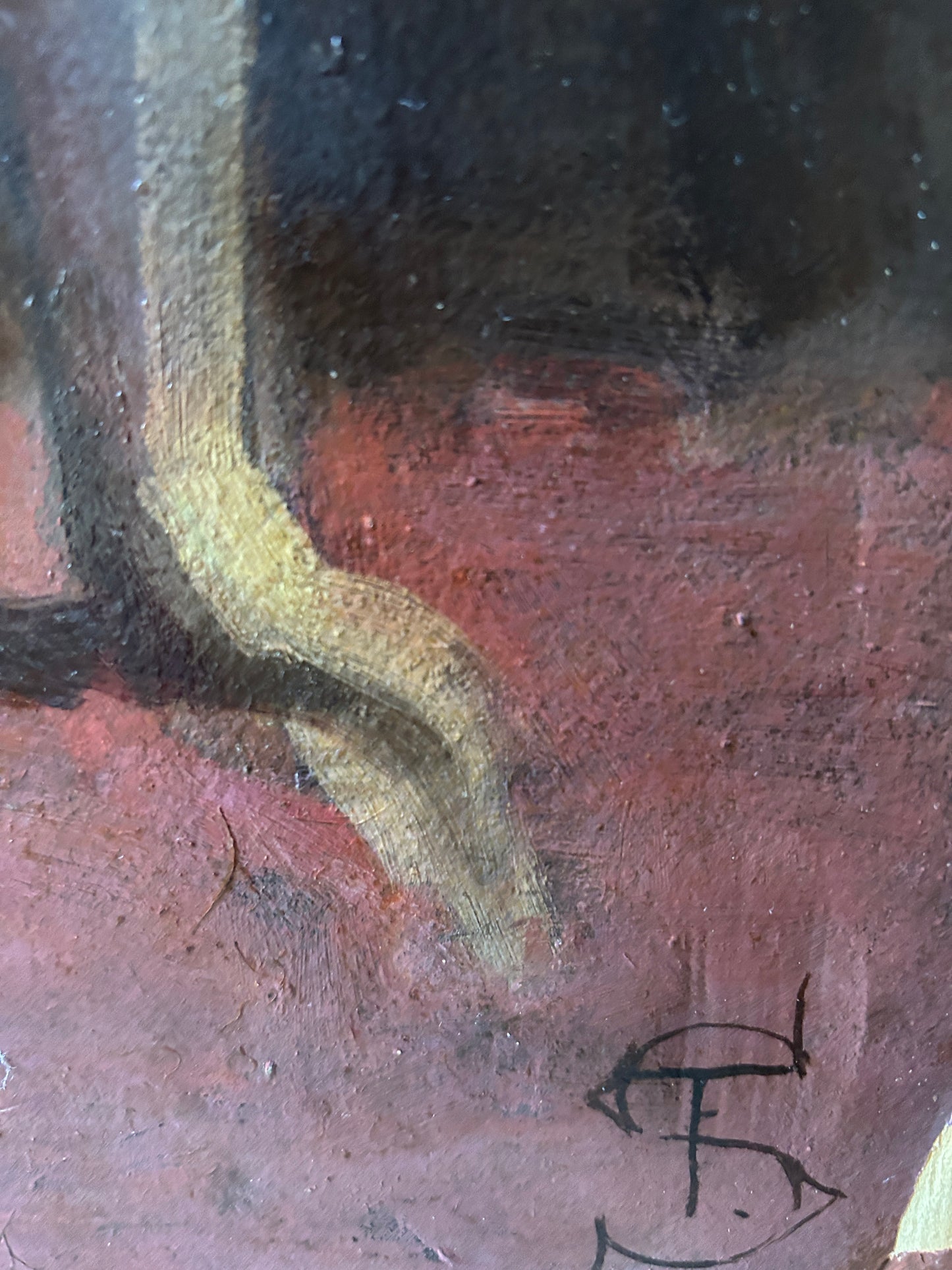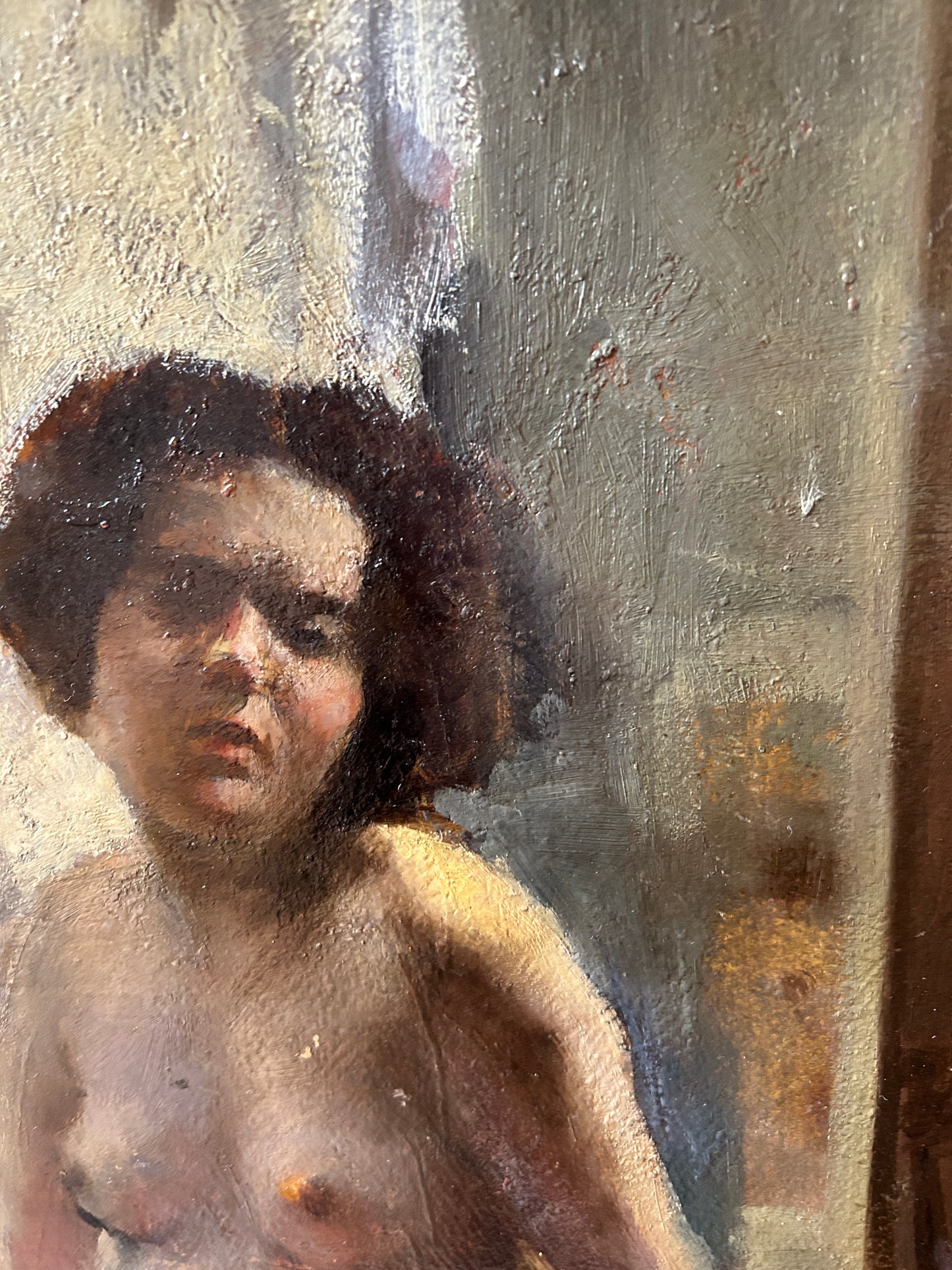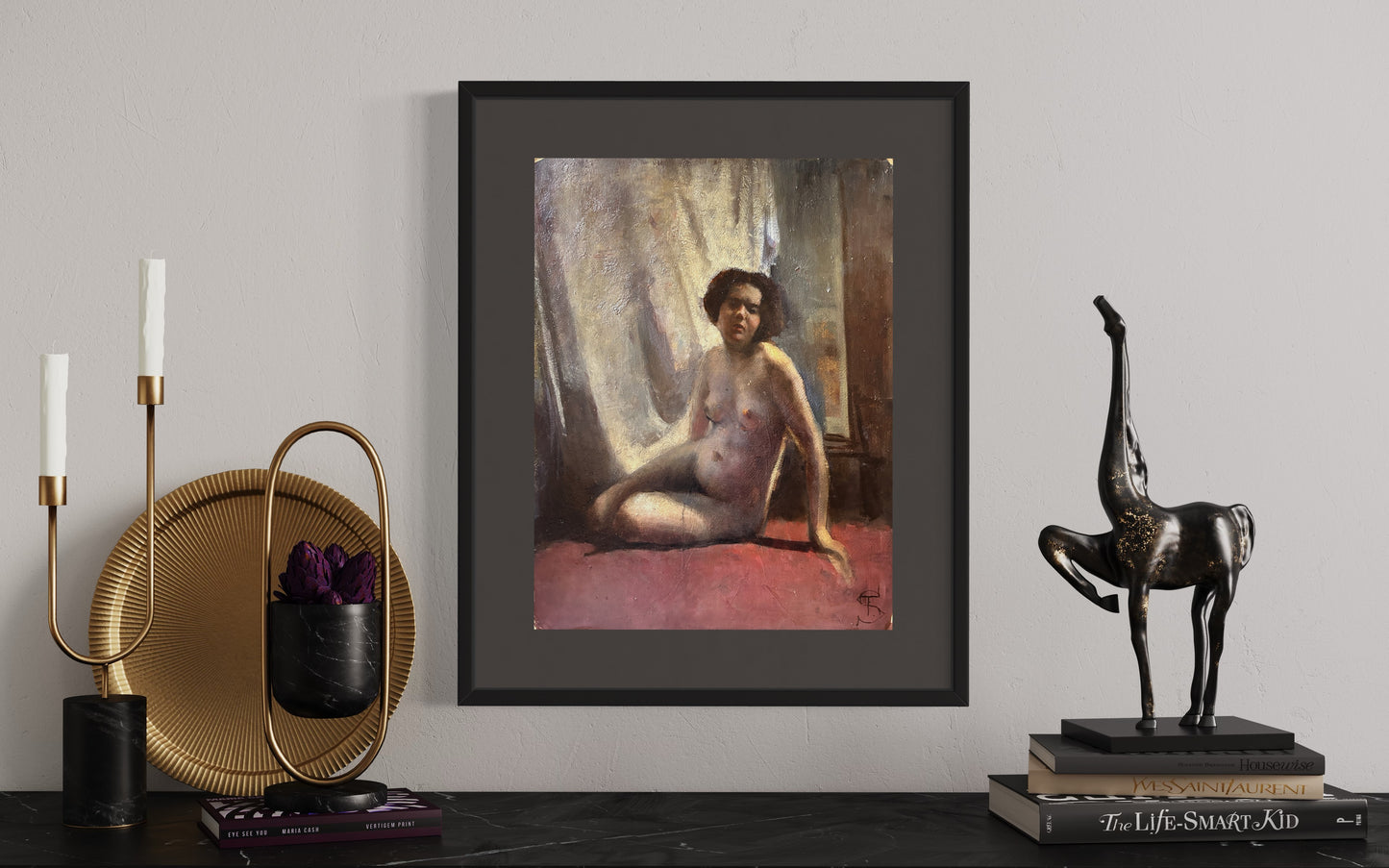Nude Att Telemaco Signorini 1825-1901
Impossibile caricare la disponibilità di ritiro
ATT. Telemaco Signorni 1835-1901
Oil on board nude. Nude (possibly in a brothel)
Telemaco Signoribni
50 x 39
monogram bottom right
oil on board
£1800
This is a very interesting oil that has been attributed to Telemarco Signorini. This is probably from his later, more raw period when he used subjects from brothels, insane asylums, etc.
This painting is unframed and the last photo is for illustrative purposes only.
Condition: The painting has a few notable condition issues. It is painted on a mill board that has some wear at the edges (see images). The painting could be with a light clean and has a few little scratches. To verso, there is an ownership inscription dated 1929.
Signorini was the most talented and versatile of the group of mid-19th-century Italian painters known as the Macchiaioli (from the word macchia, meaning spot or blot). He trained under his father Giovanni (1810-1862), a successful view painter. Early in his career he experimented with history painting, but soon devoted himself largely to landscapes and street scenes, mainly in Florence and elsewhere in Tuscany, and on the Ligurian coast. Along with other artists in what was to become the Macchiaioli group, in the mid-1850s Signorini developed a radical approach to painting out of doors, with bold, patch-like brushwork and strong contrasts of tone and colour. He was the most literary-minded of the group, acting as their critical spokesman. He was also the most cosmopolitan, travelling often to Paris and to London, and absorbing influences along the way, notably from French Impressionist painters. Alongside view paintings, his long career is punctuated by occasional forays into powerful social realism, including scenes from an asylum, a prison and a brothel. He was an accomplished etcher, and his interest in photography and in Japanese prints is also reflected in his work.
